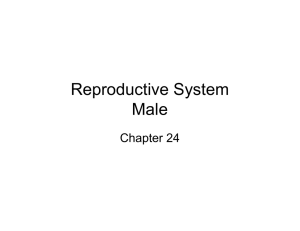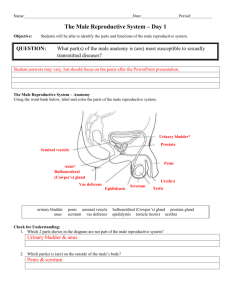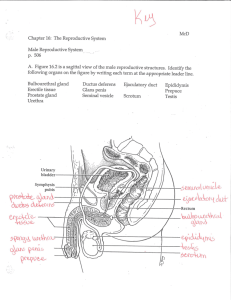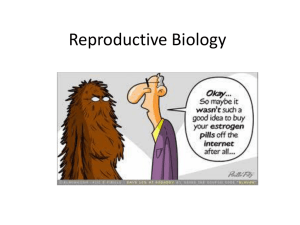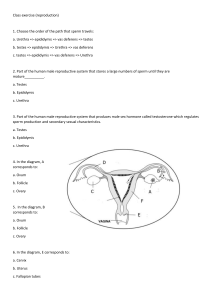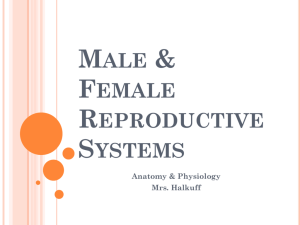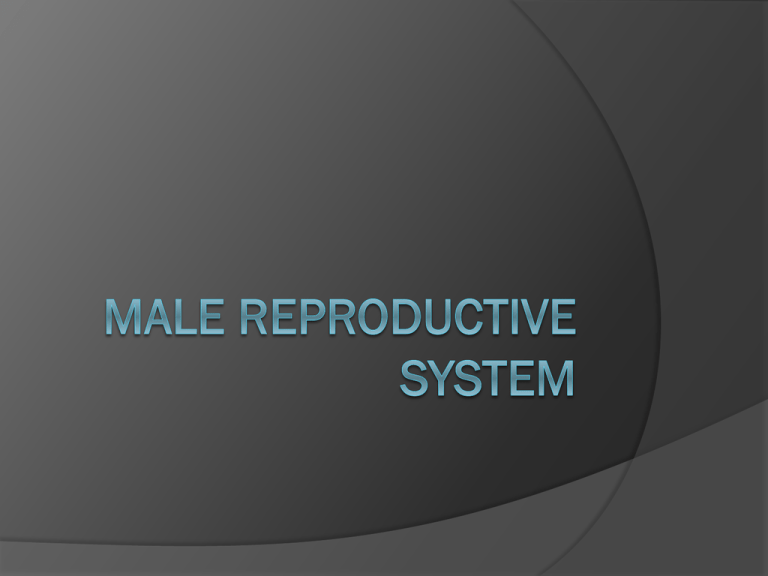
scrotum
testis
interstitial (Leydig) cells
Produce testosterone
Located in the connective
tissue between
seminiferous tubules
seminiferous tubules
Where sperm is produced
Cross section
epididymis
Allows sperm to mature and
stores them before ejaculation
spermatic
cord
Contains vas deferens, blood
and lymph vessels and nerves
vas (ductus)
deferens
Muscular tube where sperm
travels from the epididymis to
the ejaculatory duct
seminal
vesicle
Contributes about 60% of the
fluid in semen
ejaculatory
duct
Where the vas deferens and
the duct of the seminal vesicle
meet and empty into the
urethra
prostate
gland
Secretes a thin, milky fluid that
makes up about 30% of the
semen
prostatic
urethra
Membranous
urethra
bulbourethral
(Cowper’s)
gland
Produces a clear slippery fluid that
lubricates the head of the penis
The fluid also neutralizes the acidity
of residual urine in the urethra that
can be harmful to sperm
penis
penile
urethra
corpus
cavernosum
2 cylindrical erectile tissues located
on the dorsal side of the penis
crus
Each corpus cavernosum diverges
toward the inside of the body like
the arms of a Y
Each arm is called a crus
corpus
spongiosum
A single erectile body that passes
along the ventral side of the
penis and encloses the penile
urethra
bulb
The corpus spongiosum terminates
internally as a dilated bulb
glans penis
prepuce
Also called foreskin
sperm
head
acrosome
A lysosome in the form of a cap that contains enzymes used to penetrate the egg
DNA – 23 chromosomes
Located within the nucleus in the head of the sperm
midpiece
tail
diploid vs. haploid
Diploid: contain 2 sets of chromosomes
(46)
Haploid: contain 1 set (half of normal) 23



